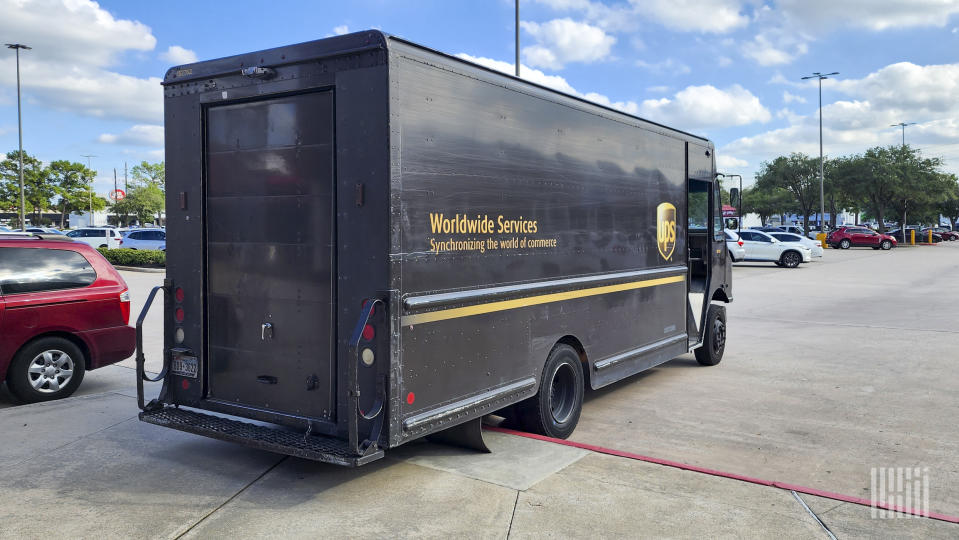More parcel shippers likely to get caught in delivery surcharge net

Every year, UPS Inc., FedEx Corp. and some regional parcel delivery carriers adjust the number of U.S. ZIP codes subject to a relatively common yet costly per-package levy known as a delivery area surcharge (DAS). Based on two outside estimates, UPS’ 2024 changes will add the equivalent of 2.75 million to nearly 3 million Americans to the DAS list, even though the carrier plans to remove more ZIP codes than it will add.
The estimates from consultancies Shippingwise and Shipware LLC were based on UPS’ (NYSE: UPS) internal data and population data from the U.S. Census Bureau. According to Shippingwise, the UPS changes will add the equivalent of about 2.9 million people to the DAS rolls, while 15,000 would be removed. Shipware’s estimates weren’t much different, with the equal of 2.73 million people being added and 15,873 people being removed.
The estimates indicate that the ZIP codes being added for 2024 cover a much larger population compared to the ZIP codes being removed, said Matt Sumowski, senior manager of client success at Shipware.
This means, in theory and likely in practice, that UPS merchants will have to pay a per-package delivery area fee for more of their transactions. UPS said in a statement that its surcharges provide “appropriate compensation” for additional costs that it bears.
FedEx (NYSE: FDX) has not made its 2024 data available to analysts, though the consultancies said that it’s a safe bet that it will make similar changes. Nicholas Fanelli, founder of Shippingwise, has estimated that the 2024 changes at both carriers will result in 29% of the U.S. population that will be covered by a DAS.
A DAS is divided into three categories. The first is a standard surcharge. A second is an “extended” area surcharge and a third, which applies to deliveries to specific ZIP codes within Alaska and Hawaii, is known as a “remote” area surcharge. Standard surcharges generally apply to relatively close-in suburban areas where the cost to serve isn’t as burdensome for the carriers. Extended area surcharges, which run higher than standard levies, cover regions that lack the delivery density of suburban neighborhoods and where the travel costs are higher. Remote area surcharges to less-acceptable delivery areas run still higher. Commercial surcharges are lower than residential levies.
DASes traditionally cover destination locations and are not applied at a delivery’s origin point. However, a returned item picked up at a DAS-eligible ZIP code would be charged a levy, according to Fanelli.
FedEx and UPS’ DAS tables are effectively the same. For example, in 2024 both will levy a $5.85 charge on each eligible residential delivery made by air. In addition, each will impose a $5.70 fee for eligible ground residential deliveries. For deliveries covered by an extended DAS, a $7.70 charge will be applied by both carriers. Each will raise their respective DAS’ in 2024 by between 25 cents to $2.50 per package, depending on the service.
Fanelli estimates that DAS accounts for about 20% of a shipper’s average total surcharge levy.
OnTrac, the largest regional carrier that has expanded into what has become a transcontinental network, applies a DAS. So does LSO, which operates across seven Southern states including all of Texas. The U.S. Postal Service does not levy a surcharge. Amazon.com Inc. (NASDAQ: AMZN), which recently launched a stand-alone parcel delivery service known as Amazon Shipping, levies a $3.70 per package on all eligible shipments.
DAS, like the other and myriad delivery surcharges imposed by the national carriers, are designed to offset their higher costs to serve. In the case of the extended and remote area surcharges, the carriers do incur higher than normal costs. However, in more high-density suburban areas where the carriers have well-established routes, the per-package cost is significantly lower, according to Fanelli, who said in the latter scenario, a higher portion of those levies will flow to the bottom line.
Sumowski of Shipware said the ZIP code shifts are an “example of how the carriers hide additional increases separate from the increase in surcharge dollar amount. The overall impact comes from the change in the rate itself, but also from the frequency with which the charge will apply.” DAS, like other surcharges such as fuel, apply to a broad range of the carriers’ services. Fanelli added that many shippers might not even notice the ZIP code changes and their potential impact on their shipping budgets.
It is also a way for the carriers to boost their top and bottom lines within a multiyear contract period, and especially during a cycle of carrier overcapacity and slow demand.
Still, a DAS can be negotiated down (though likely not out) depending on a shipper’s volume and how much density it adds to a carrier’s network. Brian C. Gibbs, president of Refund Retriever LLC, a shipment auditing firm, said in a website post earlier this year that a 25% to 50% discount off of a shipper’s published rates “is an excellent goal.”
Gibbs advised shippers to review the charges being assessed before asking for the concession and said one question that a shipper should ask is how many packages are slapped with a DAS.
Despite that, many merchants tend to accept these changes each year, and absorb any additional cost if they offer free shipping, Gibbs said.
Fanelli echoed those sentiments, saying that although they may want to pass on the DAS, they won’t risk alienating their customers to do so.
(Note: An earlier version said that Amazon Shipping does not impose DAS. Though Amazon Shipping states that it does not impose delivery surcharges, a notice in its terms and conditions shows that. it does. The story’s updated version also includes comments from UPS).
The post More parcel shippers likely to get caught in delivery surcharge net appeared first on FreightWaves.
